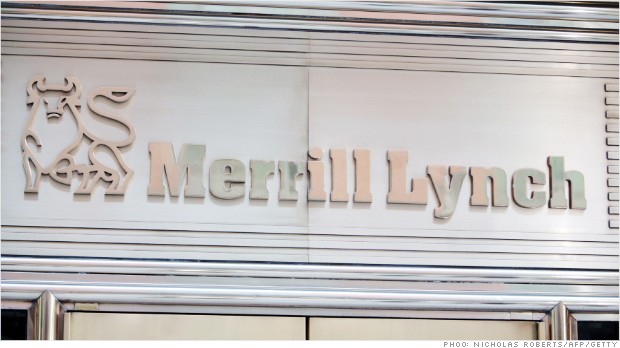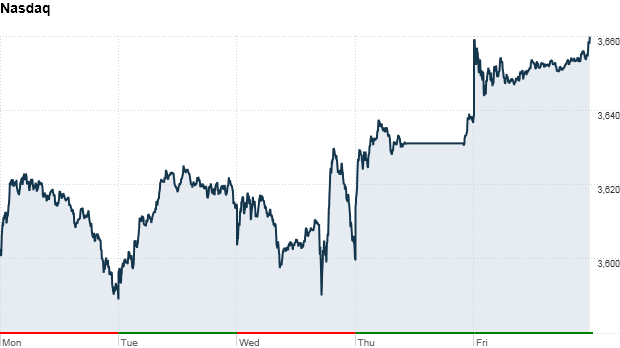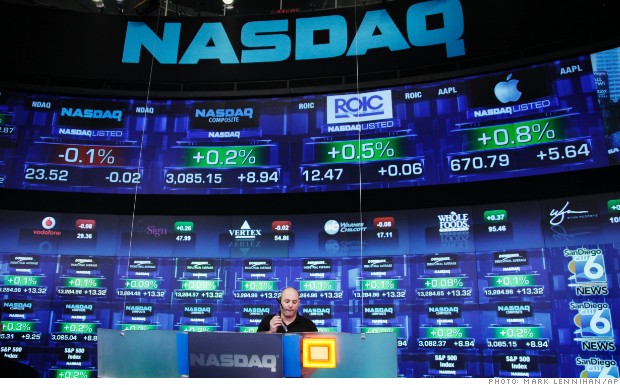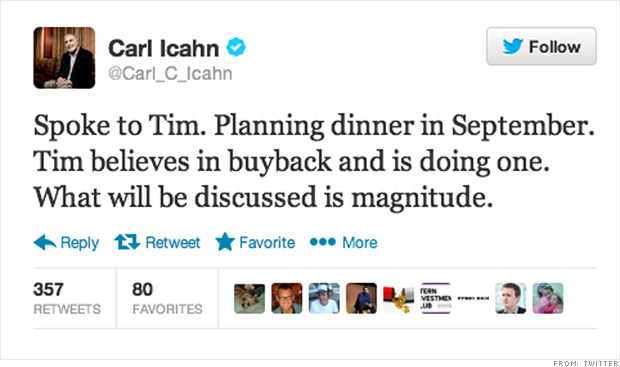
Greg and Lauren Martin scout out Louisville, Colo.
NEW YORK (Money Magazine)
The couple's plan was to be near Boulder, where they had spent many happy vacations mountain biking and snowboarding. So Lauren, a personal trainer, and Greg, a communications engineer who telecommutes, sold their Maryland home, going from listing to a signed contract in only 10 days.
Moving to a rental house in Colorado, they started shopping for a home in Louisville, fewer than 10 miles from pricier Boulder and ranked No. 2 on MONEY's Best Places 2013. "We feel like we belong here," says Lauren. "It's like living a dream."
The Martins' decision to move and the speed with which they sold their home reflect the rise in mobility accompanying the country's economic recovery.
With unemployment falling from 10% in 2009 to 7.4% today, and with fewer homeowners carrying underwater mortgages -- 850,000 homes exited negative equity in the first quarter of 2013 -- people are more willing and able to pick up stakes.
The Census Bureau says nearly 5.1 million people moved to a new state last year -- up 17% from 2010 and the highest level since 2006. And as real estate has recovered, demand has outstripped existing supply: Only 5.2 months' worth of homes were on sale in June, down from 9.4 in 2010.
Related: Where homes are affordable
So if you're ready to make a long-haul relocation, you'll have to contend with not only the perennial hassles of moving -- navigating real estate transactions, packing up possessions, finding the perfect neighborhood -- but also today's economic conditions.
Here's how to handle your next move with the least stress.
BRACE FOR TODAY'S MARKET REALITIES
In most metropolitan areas, potential buyers far outnumber available homes, according to Redfin. That's great for the selling part of your relocation, but multiple bids and fast sales make finding your next place harder. Tight lending rules, moreover, are likely to limit your flexibility in selling and buying.
Your best moves:
First sell, then buy... Most lenders today won't extend a short-term bridge loan if you're trying to buy a new home prior to selling your current one, says Peter Boomer, executive vice president at PNC Mortgage.
Nor will it be easy to carry two mortgages at once, says Dan Green, a loan officer at Waterstone Mortgage in Cincinnati. Should all your debt payments -- the two mortgages, plus any car loans and consumer debt -- top 40% of your monthly gross income, you'll have trouble getting approved, he says.
Related: Was my home a good investment?
Plan to rent out your old home and buy in your new town? Green warns that you need at least 30% equity in the old home for your rental income to be counted on a conventional mortgage application. Even so, just 75% of that income will be factored in, he says.
... Or rent your new place. Renting gives you time to get a boots-on-the-ground feel for exactly where you want to be. It also gives you a wider choice of starter housing: As you search for the perfect home, you can settle for a good-enough home without regret, since the compromise will be only temporary.
The Louisville-bound Martins -- who had always planned to rent first and buy later -- couldn't find affordable rentals in the older Boulder neighborhoods they liked most. So as a fallback, they took a one-year lease in Broomfield, a newer area.
Allow for more time to look. Whether you plan to buy or rent, expect plenty of competition during your search. "A long weekend of house hunting worked in the past, but right now it can take at least a week," notes Nadya Nahirniak-Hansen, director of relocation services at Madison real estate agency Restaino & Associates.
USE NEW TOOLS TO REFINE YOUR SEARCH
A Knight Foundation survey of 43,000 Americans landed on three basic attributes that make a community lovable: plenty of entertainment, an inviting vibe, and ample green space. Maybe that's important to you; maybe not.
To help you focus on what neighborhoods you like best, Carol Fradkin, author of the book Moving Gracefully, suggests compiling a detailed, prioritized list of your family's must-haves. That might mean great schools, easy access to public transportation, or proximity to a place of worship.
"The more specific you are about what matters most to you," says Fradkin (who herself has moved 16 times since her college years), "the more likely you'll have a smooth and happy transition." Then, well before you move, you can start looking for your ideal neighborhood.
Your best moves:
Consult a matchmaker. Hoping to re-create the look and feel of your current town in your new home? Check out the Match tab at the top of the NeighborhoodScout.com website. Plug in a place you know and like, and the site will generate a list of areas in your destination that are the closest matches, based on 273 factors.
Get a walking tour from Google's Pegman. In the Street View feature on Google Maps, drag the yellow Pegman to an address you're checking out. Then click on the white arrows in the photo to walk the neighborhood. Plug in a destination -- say, the local school -- to get a sense of what the kids' walk would be like.
Learn about headaches before you commute. Visit the SigAlert.com website for real-time commuting information for major cities of 37 states and the District of Columbia. You can get a taste of your drive from maps showing congested routes, along with live feeds from traffic cams. Another way to learn about your prospective commute: Listen regularly to the online feed of a local radio station's rush-hour broadcast.
PICK MOVERS WISELY, PACK MINIMALLY
Given the average cost to box and ship possessions for an interstate move -- $5,630, estimates the American Moving & Storage Association -- it would be nice if everything went smoothly. Alas, the Federal Motor Carrier Safety Administration, which regulates interstate moving companies, fielded 28% more complaints last year compared with 2010.
Some typical problems: Final charges that were far out of line with estimates, and delays in pickup or delivery. Sure, unsavory movers are a problem, but even the good guys are under pressure. Les Velte, president of the Consumers Relocation Services moving company in Weston, Vt., says many reputable van lines have not hired back all the workers let go during the financial crisis, making it harder to book a quality crew.
Your best moves:
Shop on reputation, not price. Get written estimates, yes, but curb your enthusiasm for the lowest bid, says Michael Garcia, author of Moving 101. And definitely steer clear of companies willing to give you an estimate over the phone.
"Check references," says Garcia. "Check their complaint record. That's how you avoid disasters." On the federal government's ProtectYourMove.gov website, you can search for movers' safety records and complaint history. Your local Better Business Bureau is another important reputation check.
Related: America's Best Places to Live
Avoid crunch time. If you're flexible, move during the October-March off-season to increase the odds you'll get a more attentive crew. "Movers are human," says Velte. "If they are go-go-go from April through July, by the time your move rolls around in August they can be exhausted." Movers are also more likely to hire less experienced temps during peak months.
Buy third-party moving insurance. Ask your home insurer whether your goods will be covered during the move; different policies from the same company may have different terms. A mover's free coverage is limited to 60¢ a pound per article, which is woefully inadequate.
Movers also sell full replacement value coverage, but Garcia recommends buying moving insurance elsewhere. "If there's a problem, I'd want a third party representing me," he says.
Shop online at movinginsurance.com or moveinsure.com: A policy with a $1,000 deductible can run about 1% of the total value of your possessions.
Get the urge to purge. The fewer possessions you move, the less you'll pay. Michael Stone, a Portland, Ore., move specialist who works with downsizing retirees, recommends mocking up room-by-room layouts based on the square footage of your new home to get a realistic feel of what's not going to fit.
And push yourself to steer clear of the savior of indecisive souls: the self-storage facility. Renting a small unit can run you over $150 a month.
MAXIMIZE YOUR RELOCATION PACKAGE
Twenty-seven percent of firms intend to increase the number of workers they relocate this year, up from 10% in 2009, according to Atlas Van Lines. Should your company be moving you, be aware that its financial support may be limited: Only about 60% of firms fully reimburse transferees and only 50% provide that help to new hires.
Your best moves:
Know what's standard. More than 75% of companies give workers two weeks or less to accept or decline a job transfer. Amid the whirlwind that such a tight deadline creates, get in writing what is and isn't paid for -- and start negotiating.
For example, shipping one automobile is commonly covered, but you could pay at least $500 apiece for any additional vehicles. Seventy-one percent of companies, reports Atlas, offer a temporary-housing allowance, typically covering a month at an extended-stay hotel.
Moving into a very tight market? You might want to ask for more time or money.
Check the expiration date on benefits. The package your company offers may include a home buying benefit such as down payment help or closing costs. If you intend to rent at first, however, make sure you can still claim the benefit when you are ready to buy. Unless you negotiate otherwise, these benefits tend to expire within a year of your move.
Avoid nasty tax surprises. Because the dollar value of your relocation benefit counts as income, you can be stuck with a big bill at tax time. So companies often add a gross-up to your benefit -- extra cash to cover the taxes you'll owe.
Unfortunately, says David Oltman of the corporate relocation firm Ineo/Relocation in Wilton, Conn., employers often underestimate gross-ups. So, he says, get a written promise from your employer to make another payment if the original proves inadequate. Based on his data, the tax hit for employees of large corporations averages $20,000 -- a lot of money better put toward enjoying your new Best Place. 
First Published: August 27, 2013: 4:07 PM ET

![]()















